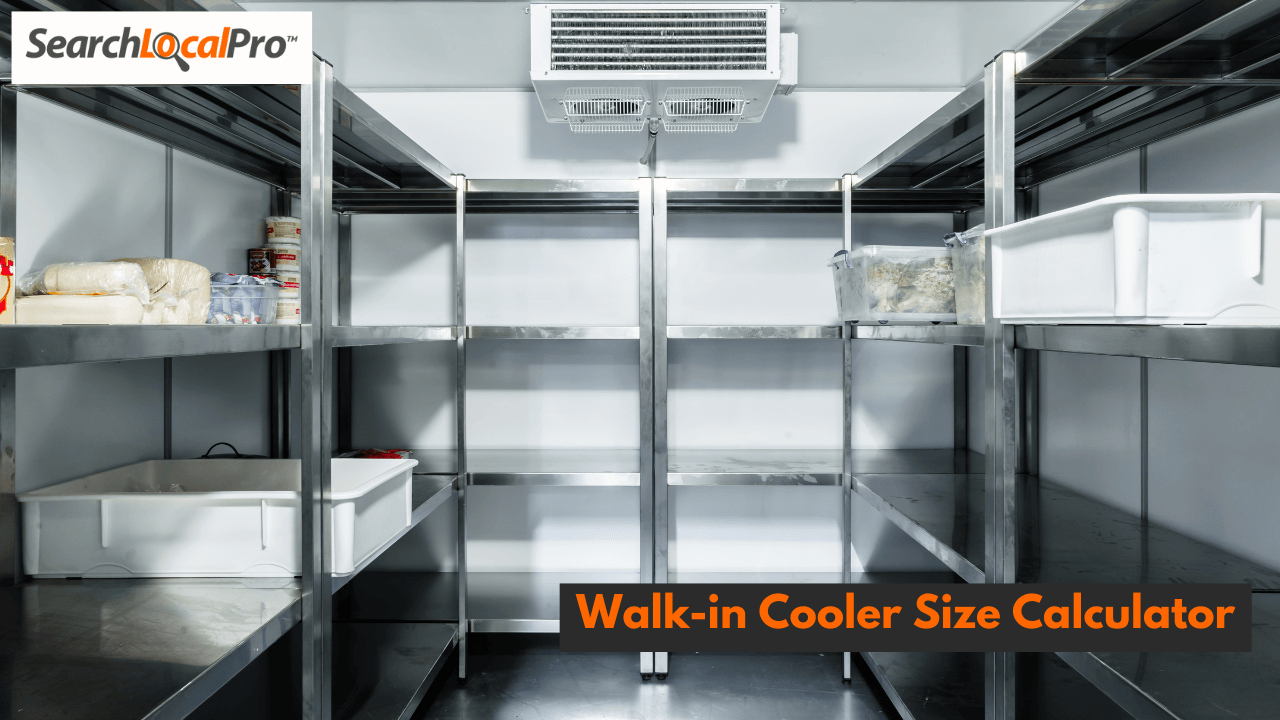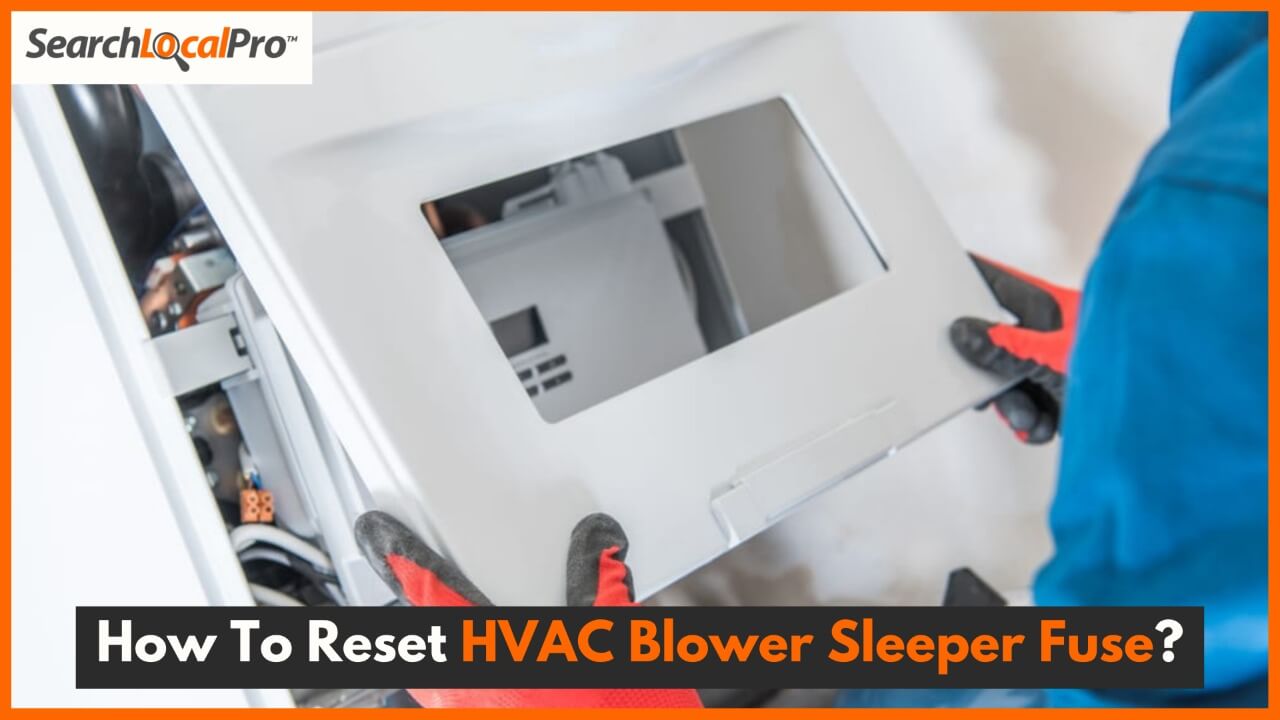Finding the right size for a walk-in cooler is essential for food businesses. A walk-in cooler provides large-scale refrigerated storage and is ideal for restaurants, grocery stores, and other establishments that need to store large quantities of perishable items. If your business serves over 250 meals daily or needs more than 80 cubic feet of refrigeration space, a walk-in cooler is the right choice. But how do you determine the size you need? Get help from Walk-in cooler size calculator.
This article will guide you through a simple method to calculate the ideal size of your walk-in cooler. From food volume and container size to storage plans and refrigeration requirements, we’ll help you find the perfect solution for your business.
Determining the Walk-in Cooler Size You Need
To find the right size for your walk-in cooler, consider these key factors:
- Food Storage Needs: Estimate how much food you need to store at peak times.
- Container Sizes: Know the sizes and shapes of containers or pallets you’ll be storing.
- Maximum Inventory: Calculate the most food you plan to store simultaneously.
A standard method to estimate walk-in cooler size is to allocate 1 to 1.5 cubic feet of storage for each meal served daily. This formula works well for businesses of varying sizes and allows for a practical way to plan space.
Step-by-Step Walk-in Cooler Sizing Calculation
To estimate the space required, follow these steps:
- Calculate Storage Volume:
- Multiply the number of meals by 1 to 1.5 cubic feet.
- Example: If you serve 300 meals daily, you’ll need between 300 and 450 cubic feet of space.
- Shelving and Overflow Space:
- Plan for shelving by estimating the linear feet required.
- Add 40-50% extra space for overflow, bulky items, and loose products.
- Convert to Square Footage:
- Multiply the linear footage by the depth of each shelf.
- Double the result to include aisle space, giving you the total square footage needed for storage.
Estimating Refrigeration Requirements
After determining the size, it’s essential to calculate the BTU (British Thermal Units) required for your walk-in cooler. The BTU rating tells you the amount of cooling power needed to maintain the desired temperature in your cooler.
Factors to Consider:
- Ambient Temperature: The temperature around the cooler affects refrigeration needs.
- Product Temperature: New items’ temperature when added to the cooler.
- Door Usage Frequency: How often the cooler is opened, which affects temperature stability.
- Holding Temperature: The constant temperature required inside the cooler or freezer.
For example, a unit designed to store food at 35°F in a kitchen with an ambient temperature of 85°F will require a higher BTU capacity than a unit kept in a cooler environment.
BTU Calculation Example
Here’s a basic approach to estimating BTU requirements based on common walk-in cooler and freezer sizes:
| Cooler Dimensions | Typical Load BTU (35°F) | Heavy Load BTU (35°F) |
|---|---|---|
| 6×6 ft | 4,986 | 6,540 |
| 8×8 ft | 6,939 | 8,350 |
| 10×10 ft | 9,072 | 10,790 |
Important Tips:
- Use “Heavy Load” BTU values for walk-ins with glass doors or high foot traffic.
- Check insulation thickness and box materials to ensure accurate load calculations.
Key Information for BTU Calculation
- Room Dimensions: Length, width, and height of the cooler.
- Temperature Settings: Desired temperature inside the cooler.
- Humidity: If specified, the relative humidity inside the cooler.
- Insulation Type and Thickness: Insulation materials and thickness for walls, ceiling, and floor.
- Infiltration Load: Frequency of door openings and the air temperature entering the cooler.
- Product Load: Type and weight of products stored, incoming temperature, and cooling rate.
- Additional Loads: Number of workers in the cooler, lighting wattage, and motor horsepower if applicable.
Common BTU Requirements for Walk-in Coolers and Freezers
Here’s a quick overview of typical BTU needs based on cooler and freezer sizes and temperatures:
35°F Walk-in Coolers (8 ft height):
| Size (L x W) | Typical BTU Load | Heavy Load BTU |
|---|---|---|
| 6×6 ft | 4,986 | 6,540 |
| 10×10 ft | 9,072 | 10,790 |
0°F Freezers (8 ft height):
| Size (L x W) | Typical BTU Load | Heavy Load BTU |
|---|---|---|
| 6×6 ft | 4,522 | 6,570 |
| 10×10 ft | 7,980 | 10,310 |
-10°F Freezers (8 ft height):
| Size (L x W) | Typical BTU Load | Heavy Load BTU |
|---|---|---|
| 6×6 ft | 4,859 | 7,070 |
| 10×10 ft | 8,573 | 11,070 |
Walk-in Cooler Size Calculator Formula
1. Calculate the Volume of the Walk-in Cooler
Volume (cubic feet)=Length×Width×Height\text{Volume (cubic feet)} = \text{Length} \times \text{Width} \times \text{Height}Volume (cubic feet)=Length×Width×Height
Determine the Cooling Load Requirements
The cooling load for a walk-in cooler is based on heat gain from different sources. Here’s a breakdown of factors to consider:
- Product Load (Q₁): Amount of heat from the products stored, which depends on product type, quantity, temperature, and how often it’s added or removed.
- Formula: Q1=Product Weight×Specific Heat of Product×ΔTemperatureQ₁ = \text{Product Weight} \times \text{Specific Heat of Product} \times \Delta \text{Temperature}Q1=Product Weight×Specific Heat of Product×ΔTemperature
- Transmission Load (Q₂): Heat entering through walls, ceiling, and floor due to temperature difference between inside and outside.
- Formula: Q2=Surface Area×U-Value of Insulation×ΔTemperatureQ₂ = \text{Surface Area} \times \text{U-Value of Insulation} \times \Delta \text{Temperature}Q2=Surface Area×U-Value of Insulation×ΔTemperature
- Infiltration Load (Q₃): Heat gain from air entering when the door is opened.
- Lighting Load (Q₄): Heat from lights within the cooler.
- Equipment Load (Q₅): Heat from any machinery, motors, or equipment inside the cooler.
- People Load (Q₆): Heat from people inside the cooler, if applicable.
3. Calculate Total Heat Load
Sum the heat load from each source:
Total Heat Load (BTU/hr)=Q1+Q2+Q3+Q4+Q5+Q6\text{Total Heat Load (BTU/hr)} = Q₁ + Q₂ + Q₃ + Q₄ + Q₅ + Q₆Total Heat Load (BTU/hr)=Q1+Q2+Q3+Q4+Q5+Q6
4. Convert to Cooling Capacity
Ensure your cooling system can meet the total BTU/hr requirement. Cooling capacity requirements may also vary depending on ambient conditions, especially in warmer climates.
Example Calculation (Simplified):
If you have a cooler with dimensions 10 ft×10 ft×8 ft10 \text{ ft} \times 10 \text{ ft} \times 8 \text{ ft}10 ft×10 ft×8 ft, a storage product that adds a load of 5000 BTU/hr5000 \text{ BTU/hr}5000 BTU/hr, transmission load of 3000 BTU/hr3000 \text{ BTU/hr}3000 BTU/hr, and minor loads from lights and other sources totaling 2000 BTU/hr2000 \text{ BTU/hr}2000 BTU/hr, your total would be:
Total Heat Load=5000+3000+2000=10000 BTU/hr\text{Total Heat Load} = 5000 + 3000 + 2000 = 10000 \text{ BTU/hr}Total Heat Load=5000+3000+2000=10000 BTU/hr
In this case, the cooler would need a cooling system capable of handling at least 10,000 BTU/hr to maintain the desired temperature.
How to calculate walk cooler BTU needs?
To calculate the BTU (British Thermal Unit) needs for a walk-in cooler, use this formula:
BTU/hr = Volume (cubic feet) × Insulation Factor × Temperature Difference × Usage Factor
- Volume: Measure the interior (length × width × height in feet).
- Insulation Factor: Use 0.8 for well-insulated units or 1.2 for poorly insulated ones.
- Temperature Difference: Subtract the desired cooler temperature from the average external temperature.
- Usage Factor: Adjust for door openings and heat-producing equipment inside (e.g., 1.1 to 1.5).
For example, a 10×10×8 ft cooler, well-insulated, with a 40°F inside temp and 90°F external temp, has:
BTU/hr = 800 × 0.8 × 50 × 1.2 ≈ 38,400 BTU/hr.
Adjust for specific factors like frequent usage or additional heat sources.
Getting Your Walk-in Cooler Installed
Choosing and installing a walk-in cooler is an investment. Proper installation ensures that your unit runs efficiently and lasts longer.
Refrigeration installation companies can assist with both selection and installation, helping you avoid common issues like improper sizing, which can cause the refrigeration unit to run continuously and eventually freeze up.
Walk-in Cooler Size Calculator FAQs
How big should my walk-in cooler be?
The size depends on how much food you need to store. A good starting point is 1-1.5 cubic feet of space per meal served each day. Add extra room for overflow and bulky items.
How many BTUs do I need for a walk-in cooler?
BTU requirements depend on cooler size, ambient temperature, and door usage frequency. Use a calculator to find a precise estimate based on your specific needs.
How to calculate cooler size?
Multiply the number of meals served daily by 1 to 1.5 cubic feet. Add 40-50% for overflow, then calculate aisle and shelving space.
What size compressor do I need for a walk-in cooler?
Compressor size depends on BTU requirements. Be sure to check insulation type, ambient temperature, and door usage frequency for an accurate assessment.
Conclusion
Choosing the right size for your walk-in cooler involves calculating storage needs, BTU requirements, and installation specifications. Use these guidelines to ensure efficient and reliable refrigeration for your business.




